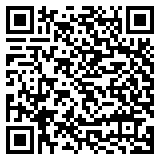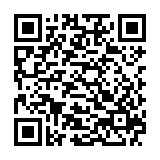In a world that’s more connected than ever, interpreting has taken on new forms. Whether it’s breaking down language barriers during international meetings or assisting in critical moments like medical emergencies, interpreters play a crucial role. But which is better: remote interpreting or in-person interpreting? Each has its unique advantages and challenges. Let’s break down remote vs. in-person interpreting.
The Rise of Remote Interpreting
Technology has revolutionized the way we communicate. With the rise of video conferencing platforms like Zoom and Microsoft Teams, remote interpreting has become more popular and accessible. This form of interpreting connects people across the globe without the need for travel.
Pros of Remote Interpreting
- Accessibility for All:
Remote interpreting makes it easy for people in remote areas to access language services. You don’t need to be in a major city to find an interpreter—you just need an internet connection. - Cost-Effective:
Without the need to cover travel and accommodation costs for interpreters, remote interpreting is often more affordable. This is a big plus for businesses and organizations on a budget. - Quick and Convenient:
Need an interpreter at the last minute? Remote interpreting services can be arranged quickly, making them perfect for unexpected situations. - Eco-Friendly:
Remote interpreting eliminates the need for travel, reducing the carbon footprint of in-person meetings. It’s a small but meaningful step toward sustainability.
Cons of Remote Interpreting
- Internet Woes:
The effectiveness of remote interpreting depends on a stable internet connection. A bad connection can lead to misunderstandings or delays, which can be critical in some situations. - Lack of Personal Connection:
Body language and subtle cues can sometimes get lost in virtual settings. This can affect the quality of communication, especially in sensitive conversations. - Limited Situations:
Remote interpreting isn’t always ideal for complex settings, such as courtroom cases or high-stakes negotiations, where the presence of an interpreter can make a difference.
The Power of In-Person Interpreting
For centuries, interpreting was strictly an in-person job. Even with the advancements in technology, in-person interpreting remains the gold standard for certain settings. Why? Let’s take a look.
Pros of In-Person Interpreting
- Human Connection:
Being physically present allows interpreters to pick up on non-verbal cues like body language and tone. This makes communication more effective and nuanced. - Reliability:
No worries about dropped calls or technical glitches. In-person interpreting provides consistent and uninterrupted service. - Versatile and Flexible:
In-person interpreters can adapt to various environments, from hospitals to conference halls. They can also handle complex group dynamics better than remote interpreters. - Cultural Sensitivity:
In-person interpreters can help smooth cultural misunderstandings by mediating conflicts or addressing culturally specific gestures that might arise.
Cons of In-Person Interpreting
- Higher Costs:
Travel, lodging, and hourly rates for in-person interpreters can add up, making this option more expensive. - Time-Consuming:
Arranging for an in-person interpreter often requires more time and planning. This may not work for situations that need immediate assistance. - Limited Reach:
In-person interpreters are tied to specific locations. Finding the right interpreter for a rare language in a remote area can be a challenge.
When to Choose Remote Interpreting
Remote interpreting shines in situations where time, cost, and accessibility are key considerations. For example:
- Virtual Business Meetings: Perfect for connecting teams from different parts of the world.
- Medical Consultations: A remote interpreter can assist patients and doctors quickly, even in emergencies.
- Education and Training: Online classes and workshops can easily incorporate remote interpreting services.
When to Opt for In-Person Interpreting
In-person interpreting is ideal for scenarios that require a high level of precision and personal engagement. Examples include:
- Legal Proceedings: Courtrooms often rely on in-person interpreters to ensure accuracy.
- International Conferences: Large events benefit from the clarity and professionalism of on-site interpreters.
- Healthcare Settings: For critical medical discussions, the presence of an interpreter can make patients feel more comfortable and understood.
Bridging the Gap: A Hybrid Approach in Remote vs. In-Person Interpreting
Some situations might benefit from a mix of both. For instance, large conferences could have in-person interpreters for keynote speakers and remote interpreters for breakout sessions. This hybrid approach combines the strengths of both methods.
Conclusion: Which is Better in Remote vs. In-Person Interpreting?
The choice between remote and in-person interpreting depends on the specific needs of the situation. Remote interpreting is a fantastic option for speed and convenience, while in-person interpreting offers unmatched reliability and depth. By understanding the pros and cons of each, you can choose the best solution for effective communication. After all, the ultimate goal of any interpreter is to bridge the gap between languages and bring people closer together.





0 Comments